|
|
Franz Liszt (Composer, Arranger) |
|
Born: October 22, 1811 - village of Doborján, near Sopron, Hungary
Died: July 31, 1886 - Bayreuth, Germany |
|
Franz Liszt [Hungarian: Liszt Ferenc] was a Hungarian virtuoso pianist and composer. He studied and played at Vienna and Paris and for most of his early adulthood toured throughout Europe giving concerts. His virtuosity earned him approbations by composers and performers alike throughout Europe. His great generosity with both time and money benefited the lives of many people: victims of disasters, orphans and the many students he taught for free. He also contributed to the L.v. Beethoven memorial fund.
His piano compositions include works such as his Piano Sonata in B minor, and two piano concertos, which have entered the standard repertoire. He also made many exuberant piano transcriptions of operas, famous symphonies, Paganini Caprices, and Schubert Lieder. As would be expected from a pianist-composer of Liszt's virtuosity, many of his piano compositions are amongst the most technically challenging in the repertoire. |
|
Biography |
|
Liszt was born in the village of Doborján, near Sopron, Hungary, in what was then the Austrian Empire (Doborján is now Raiding in Austria after the Treaty of Trianon of 1920). His baptism record is in Latin and lists his first name as Franciscus. The Hungarian variant Ferenc is often used, though Liszt never used this himself. His father, Ádám Liszt, was Hungarian and his mother was Austrian-born Anna Liszt, née Lagen.
Liszt displayed incredible talent at a young age, easily sight-reading multiple staves at once. His father, who worked at the court of Count Esterházy, gave him his first music lessons when he was six years old. Local aristocrats noticed his talent and enabled him to travel to Vienna and later to Paris with his family. As a result, Liszt never fully learned Hungarian; his later letters and diaries show that he came to regret this deeply. One letter to his mother begins in faltering Hungarian, and after an apology continues in French (his preferred language).
In Vienna he was educated in piano technique by Carl Czerny. His father had wanted him to be taught by Johann Nepomuk Hummel, but Hummel's fees were too high. Antonio Salieri taught him the technique of composition and fostered the young Liszt's musical taste.
He formed an early friendship with Frédéric Chopin, but later fierce competition turned the men into rivals. He was a lifelong friend of Camille Saint-Saëns, and the latter dedicated his Symphony #3 in C Minor to Liszt.
On April 13, 1823, Liszt gave a concert, and it is often said that the 53-year-old Ludwig van L.v. Beethoven gave him a kiss for his marvelous playing. An account of the episode can be found in the separate article Liszt and L.v. Beethoven. |
|
Road to Pilgrimage |
|
Liszt left Vienna in 1823 to travel. In Paris, he attended a concert by the virtuoso violinist Paganini and became motivated to become the greatest pianist of his day. He often took to seclusion in his room, and was heard practicing for over 10 hours a day. In 1832 he wrote the Grande Fantaisie de Bravoure sur La Clochette de Paganini ("Great Bravura Fantasy on Paganini's La Campanella"). A shorter piece using the same thematic content was included in the 1838 Etudes d\'Execution Transcendante d'apres Paganini (Etudes for Transcendental Technique after Paganini). Also composed in this period were the 12 Grandes Etudes (Liszt later rewrote these into the 12 Transcendental Etudes in 1851).
He fraternized with such noted composers of his time as F. Chopin, Hector Berlioz, Robert Schumann, and Richard Wagner, the last of whom his daughter later married. He was very widely read in philosophy, art and literature and was on friendly terms with the painter Ingres and the authors Heine, Lamennais, H.C. Andersen, and Baudelaire, who addressed his prose poem "Le thyrse" to Liszt.
From 1835 to 1839 Franz Liszt lived with Marie Catherine Sophie de Flavigny, ex-wife of the Comte d'Agoult. She is better known by her pen name, "Daniel Stern." They had two daughters, Blandina (1835-1862) and Cosima (1837-1930), and one son, Daniel (1839-1859).
In 1840-1841 Liszt took part in two tours of the British Isles arranged by the young musician and conductor Lewis Henry Lavenu, accompanied by Lavenu's half brother Frank Mori, two female singers and John Orlando Parry, an all round musician, singer and entertainer (who vividly recorded the tour in his diary). Between August 17 and September 26, they gave 50 concerts around England which were generally unsuccessful, having an average attendance of 140. The second tour which encompassed Liverpool, Ireland and Scotland from November 1840- January 1841 was mildly more successful, with audiences of more than 1200 in Dublin. The tour was however a financial failure, and Liszt waived his promised 500 guineas a month fee.
In 1847 Liszt met Princess Carolyne zu Sayn-Wittgenstein. The Princess was an author, whose one work was published in 16 volumes, each containing over 1600 pages. Her longwinded writing style had some effect on Liszt himself. His biography of F. Chopin and his chronology and analysis of Gypsy music (which later inspired Béla Bartók) were both written in the Princess' loquacious style. The couple had intended to marry in 1860, but since the Princess had been previously married and her husband was still alive, the Roman Catholic authorities would not approve the wedding. Liszt and Princess Carolyne remained friends, although Liszt never recovered from being unable to marry her.
During the years in which he performed regularly in public, he was almost universally acknowledged (even by musical conservatives who disliked his compositions) as the foremost pianistic executant and interpereter. His main rival in public esteem as a virtuoso was Sigismond Thalberg, who specialized in salon music, especially operatic fantasies. Thalberg's reputation has faded, and in current opinion, only F. Chopin is comparably significant among romantic pianists. |
|
Liszt in Germany |
|
In 1848, Liszt gave up public performances on the piano and went to Weimar, remaining there until 1861. During this period he acted as conductor at court concerts and on special occasions at the theatre, gave lessons to a number of pianists, including the great virtuoso Hans von Bülow, who married Liszt's daughter Cosima in 1857. He also wrote articles championing Berlioz and Wagner, and produced those orchestral and choral pieces upon which his reputation as a composer mainly rests. His efforts on behalf of Wagner, who was then an exile in Switzerland, culminated in the first performance of Lohengrin in 1850.
The compositions belonging to the period of his residence at Weimar comprise two piano concertos, in E flat and in A, the Totentanz, the Concerto pathetique for two pianos, the Piano Sonata in B minor, sundry Etudes, fifteen Rhapsodies Hongroises, twelve orchestral Poemes symphoniques, Eine Faust Symphonie, and Eine Symphonie zu Dantes Divina Commedia, the 13th Psalm for tenor solo, chorus and orchestra, the choruses to Herder's dramatic scenes Prometheus, and the Graner Fest Messe.
In 1851 he published a revised version of the 1838 Etudes d'Execution Transcendante d'apres Paganini, now titled Grandes Etudes de Paganini (Grand etudes after Paganini), the most famous of which is La Campanella, a study in octaves, shakes (trills) and leaps. |
|
In retirement |
|
Liszt retired to Rome in 1861. He joined the Franciscan order in 1865, receiving the tonsure and four Minor Orders of the Catholic Church (namely, Porter, Lector, Exorcist and Acolyte). From 1869 onwards, Abbé Liszt divided his time between Rome, Weimar and Budapest where during the summer months he continued to receive pupils gratis, including Alexander Siloti. During this time, his relationship with Wagner grew more strained. Cosima left Bülow, who abused her, for Wagner in 1869. The intensely devout Catholic Liszt was personally repulsed by his new son-in-law, but continued to champion his music, and regularly attended the Bayreuth Festival.
From 1876 until his death he also taught for several months every year at the Hungarian Conservatoire of Budapest. He died in Bayreuth on July 31, 1886 as a result of pneumonia which he contracted during the Bayreuth Festival hosted by his daughter, Cosima. At first he was surrounded by some of his more adoring pupils, including Arthur Friedheim, Alexander Siloti and Bernhard Stavenhagen, but they were denied access to his room by Cosima shortly before his death at 11:30pm. He is buried in the Bayreuth Friedhof. |
|
Musical style and influence |
|
The majority of Liszt's piano compositions reflect his advanced virtuosity; however he was a prolific composer, and wrote works at several levels of difficulty, some being accessible to intermediate- (and even beginner-) level pianists. Abschied (Farewell) and Nuages Gris are examples of this less virtuosic style, as are at least some of the six Consolations.
In his most popular and advanced works, he is the archetypal Romantic composer. Liszt pioneered the technique of thematic transformation, a method of development which was related to both the existing variation technique and to the new use of the leitmotif by Richard Wagner. He also largely invented the symphonic poem, or tone poem, in a series of single-movement orchestral works composed in the 1840s and 1850s. His poems all came from classical literature, including "Ce qu'on entend sur la montagne," based on a Victor Hugo poem of the same title, and "Les preludes" from Lamartine. Liszt's "First Mephisto Waltz" was based on Lenau's Faust, and he composed a second waltz from the poem in 1881. Other pieces are based on works by Lord Byron, Goethe and Dante. Liszt's symphonic poems, although successes, were criticised because they were not Absolute music. His transcriptions met with less criticism. As a transcriber of even the most unlikely and complicated orchestral works, he created piano arrangements which stood on their own merits; many other pianist-composers followed his example.
While his Hungarian nationalist works are widely recognized, his understanding of form, expression and use of virtuosity for musical effect are more apparent elsewhere.
Later works of the composer such as Bagatelle sans tonalité ("Bagatelle without Tonality") foreshadow composers who would further explore the modern concept of atonality. His thoroughly revised masterwork, Années de Pélerinage ("Years of Pilgrimage"), arguably includes his most provocative and stirring pieces. This set of three suites ranges from the pure virtuosity of the Suisse Orage (Storm) to the subtle and imaginative visualizations of artworks by Michaelangelo and Raphael in the second set. Années contains some pieces which are loose transcriptions of Liszt's own earlier compositions; the first "year" recreates his early pieces of Album d'un voyageur, while the second book includes a resetting of his own song transcriptions once separately published as Tre sonetti del Petrarca ("Three sonnets of Petrarch"). The relative obscurity of the vast majority of his works may be explained by the immense number of pieces he composed.
To Franz Liszt's honor, he helped found the Liszt School of Music in Weimar, which bears his name. - Besides, Liszt Ferenc Academy of Music in Budapest (a music school and a concert hall) is also named after him.
His piano works have always been well represented in concert programs and recordings by pianists throughout the world. Many of his works have been recorded a multitude of times. However the only pianist who has recorded his entire pianistic oeuvre is the Australian Leslie Howard. This massive undertaking included a number of premiere recordings. |
|
Noted works |
|
(1822) Variation on a Theme by Diabelli (S/G147, R26)
(1826) Etude in Twelve Exercises, including No. 10 in F Minor
(1832) Grande Fantasie de Bravoure sur La Clochette, variations (S/G420, R321)
(1833) Arrangement of "Scaffold March" from Berlioz, Symphonie Fantastique (S/G470, R136)
(1833) Divertissement on the Cavatina "I tuoi frequenti palpiti" from Pacini's La Niobe (S/G419, R230)
(1838) Grandes Etudes de Paganini, including No. 3, "La Campanella"; and No. 5, "La Chasse" (revised 1851)
(1841) Feuilles d'album ('Album Leaves'), (S/G165)
(1841) Réminiscences de Don Juan, (S/G418)
(1842) Valse-Impromptu, (S/G213)
(1848) Trois Études de Concert No. 3, Un Sospiro ("A sigh"), Etude No. 39 (piano solo) (S/G144, R5)
(1848-53) Années de Pèlerinage: Première Année — Suisse; Deuxième Année — Italie - Venezia e Napoli; Troisième Année
(1848-61) Twelve Symphonic Poems
Ce qu'on entend sur la montagne, (1848-9) (after Victor Hugo)
Tasso: lamento e trionfo, (1849) (after Byron)
Les préludes, after Lamartine (1848, rev. before 1854)
Orpheus, (1853-4)
Prometheus, (1850)
Mazeppa, (1851)
Festklänge, (1853)
Héroïde funèbre, (1849-50)
Hungaria, (1854)
Hamlet, (1858)
Hunnenschlacht, (1857)
Die Ideale (1857), after Schiller
(1849) Piano Concerto no. 1 in E-flat Major (S/G124)
(1849) Piano Concerto no. 2 in A Major (S/G125) (revised 1861)
(1849) Harmonies Poétiques et Religieuses, (S/G173) a collection of solo piano pieces, including the often-performed No. 7, Funérailles
(1849) Totentanz ('Dance of death') (S/G126ii), piano concerto. (revised 1853-1859)
(1850) Liebesträume No. 3 ("Dreams of Love") in A♭ Major (piano solo) (S/G541, R211)
(1851) Transcendental Etudes (Prelude, Molto Vivace, Paysage, Mazeppa, Feux Follets, Vision, Eroica, Wilde Jagd, Ricordanza, Allegro Agitato Molto, Harmonies du soir, and Chasse-niege. Known well for being technically difficult, notedly Mazeppa and Feux Follets) (S/G139, R2B)
(1851) Nineteen Hungarian Rhapsodies (S/G244, R106) - Rhapsody No. 2 became famous in the modern day as a popular piece for accompaniment of animated cartoons, during the golden age of animation; Rhapsody No. 19 in D Minor (1885) is also of note.
(1853) Piano Sonata in B minor (S/G178, R21)
(1854) Faust Symphony
(1855) Prelude and Fugue on B-A-C-H for organ, rev. 1870
(1857) Dante Symphony
(1860) Mephisto Waltz No. 1 (piano solo) (S/G514, R181)
(1866) Christus (S/G498b)
(1881) Nuages Gris ('Grey clouds') (S/G199, R78)
(1885) Bagatelle sans tonalité
Note: Although Liszt provided opus numbers for his works during his lifetime, these are rarely used today. Instead, his works are usually identified using one of two different cataloging schemes:
More commonly used in English speaking countries are the "S" or "G" numbers, derived from Humphrey Searle catalogue of the 1960s, The Music of Liszt.
Less commonly used is the "R" number, which derives from Peter Raabe's 1931 catalogue Franz Liszt: Leben und Schaffen. |
|
Literary Works |
|
Franz Liszt wrote about many subjects, such as: a necrology of Paganini; the position of music in Italy; Robert and Clara Schumann; F. Chopin; Robert Franz; L.v. Beethoven's Fidelio; Felix Mendelssohn's A Midsummer Night's Dream; the Goethe's Foundation at Weimar; Wagner's Lohengrin and Tannhäuser; the music of the Hungarian gypsies; John Field's nocturnes; Berlioz's Harold in Italy; and much more. His letters and musical essays are published in 6 volumes.
Some literary works that appeared under his name were actually written by Marie d'Agoult and Carolyn von Sayn-Wittgenstein. However, a work only he could have wrhimself is a "Manual of Pianoforte Technique" for the Geneva Conservatoire. This has never seen the light of day, but there is no reason to believe it never existed. It is now considered a lost work. It would provide an invaluable insight into the playing style of probably the greatest pianist who ever lived. |
|
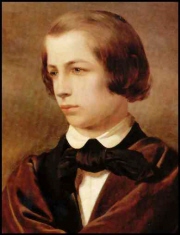
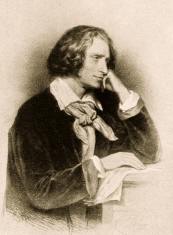
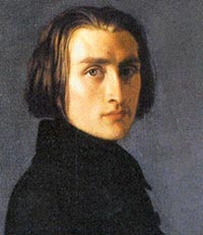 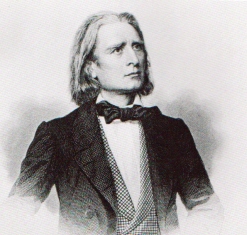
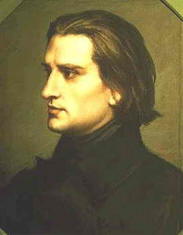 
|
|
More Pictures |
|
Source: Wikipedia Website
Contributed by Aryeh Oron (April 2006) |
|
Franz Liszt : Short Biography | Piano Transcriptions: Works | Recordings: 1900-1949 | 1950-1959 | 1960-1969 | 1970-1979 | 1980-1989 | 1990-1999 | 2000-2009 | 2010-2019 |
|
Arrangements of J.S. Bach's Works |
|
Title |
Year |
|
Variations on Motif from Cantata BWV 12 (Mvt. 2) |
|
|
Use of Chorale Melodies in his works |
|
Title |
Chorale Melody |
Year |
|
Aus tiefer Noth schrei ich zu dir [based on Bach, BWV 38], org/hmn/pedal pf |
Aus tiefer Not schrei ich zu dir |
1856-1860 |
|
Nun ruhen alle Wälder, No. 5 of Zwölf alte deutsche geistliche Weisen [Deutsche Kirchenlieder und liturgische Gesänge] for piano |
O Welt, ich muß dich lassen |
1878-1879 |
|
Was Gott tut, das ist wohlgetan, No. 1 of Zwölf alte deutsche geistliche Weisen [Deutsche Kirchenlieder und liturgische Gesänge] for piano |
Was Gott tut, das ist wohlgetan |
1878-1879 |
|
Wer nur den lieben Gott läßt walten, Nr. 11 of Zwölf alte deutsche geistliche Weisen [Deutsche Kirchenlieder und liturgische Gesänge] for piano |
Wer nur den lieben Gott läßt walten |
1878-1879 |
|
Links to other Sites |
|
Franz Liszt Site
Franz Liszt (Wikipedia)
Liszt, Franz (1811 - 1886) (Naxos)
CLASSICAL MUSIC ARCHIVES: Liszt
Franz Liszt Project
Liszt Franz English (Maurice Abaravanel)
Lesson Tutor presents Franz Liszt biography
Franz Liszt. MIDI files (free download) (Kunst der Fugue)
IMSLP - International Music Score Library Project's Liszt page
Liszt's Scores (Mutofia Project) |
Piano Society: Liszt
Works by Franz Liszt (Project Gutenberg)
SheetMusicArchive.net: Liszt
Free scores by Franz Liszt (Werner Icking Music Archive)
PianoParadise: Liszt
Complete Liszt MP3 catalogue (Scandinavian Liszt Society)
Franz Liszt (MusicBrainz)
Letters of Franz Liszt Concert programme (Centre for Performance History)
Liszt cylinder recordings (University of California) |
|
Bibliography |
|
Franz Liszt: The Virtuoso Years (1811-1847) by Alan Walker, Cornell University Press, Revised Edition (1993) ISBN 0801494214
Franz Liszt: The Weimar Years (1848-1861) by Alan Walker, Cornell University Press, Reprint (1993) ISBN 0801497213
Franz Liszt: The Final Years (1861-1886) by Alan Walker, Cornell University Press, reprint (1997) ISBN 0801484537
The Death of Franz Liszt: Based on the Unpublished Diary of His Pupil Lina Schmalhausen by Lina Schmalhausen, annotated and edited by Alan Walker, Cornell University Press (2002) ISBN 0801440769
The Piano Master Classes of Franz Liszt 1884-1886: Diary Notes of August Gollerich by August Gollerich, edited by Wilhelm Jerger, translated by Richard Louis Zimdars, Indiana University Press (1996) ISBN 0253332230 |
|
|